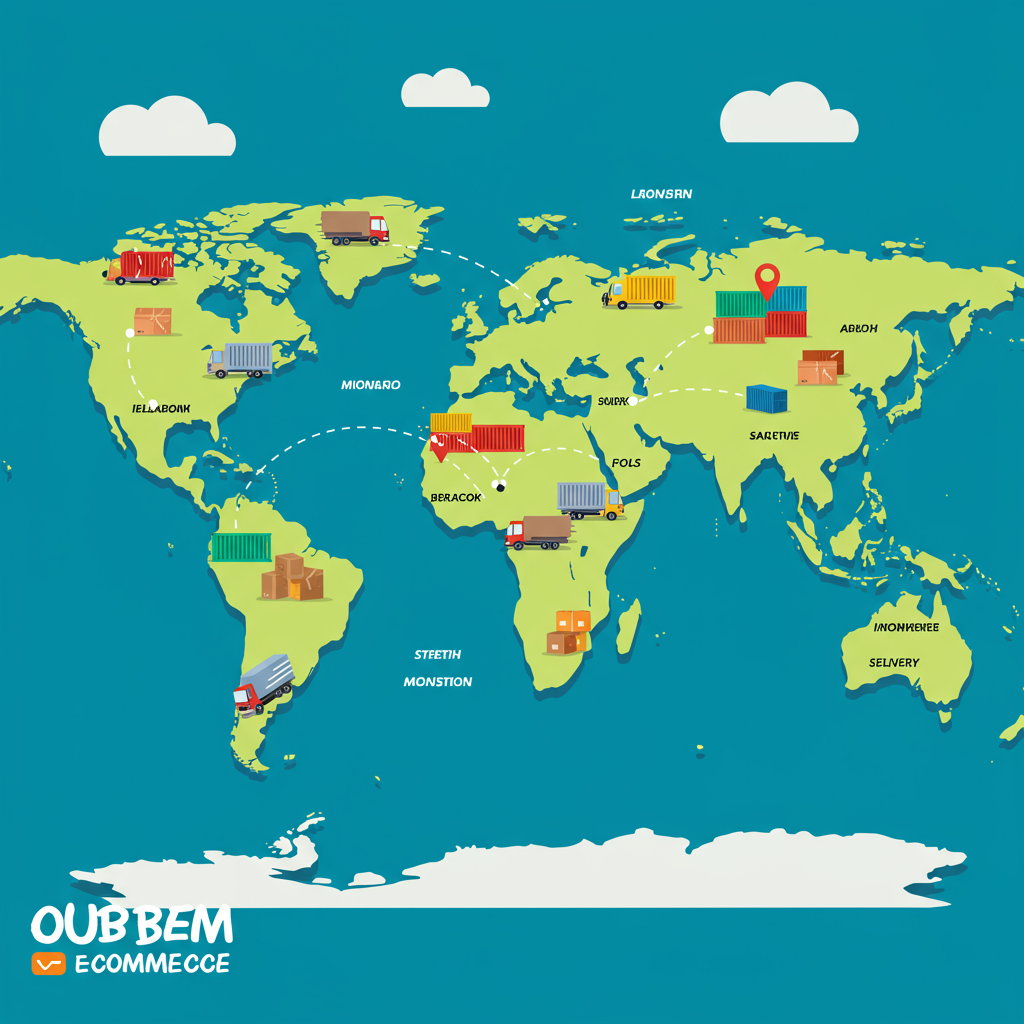A comprehensive guide for Shopify merchants looking to expand their reach worldwide.
As a Shopify merchant, you’ve likely experienced the thrill of a local sale. But what about the immense potential of the global market?
Expanding your reach internationally can unlock incredible growth opportunities for your business.
However, I know that the thought of international shipping can feel incredibly daunting. It’s a complex landscape with many moving parts.
From customs regulations to choosing the right carriers, there’s a lot to consider.
That’s why I’ve put together this detailed guide. My goal is to demystify international shipping for you, making it a manageable and exciting part of your business strategy.
Let’s dive into the core strategies I believe are essential for any Shopify store looking to go global.
My first piece of advice is always to start with thorough research and planning.
Before you even think about shipping, identify your target markets. Which countries show the most interest in your products?
Consider factors like purchasing power, cultural fit, and competition in those regions.
Crucially, you must research the import regulations, customs duties, and taxes for each target country.
Every nation has its own unique set of rules, and understanding them upfront will save you a lot of headaches later.
Next, let’s talk about shipping carriers. This is a critical decision that impacts cost, speed, and reliability.
Major international carriers like DHL, FedEx, and UPS offer extensive global networks and robust tracking.
They are often excellent choices for expedited shipping or higher-value items.
For smaller, less time-sensitive packages, national postal services (like USPS, Royal Mail, Canada Post) can be more cost-effective.
I recommend comparing their services, rates, and transit times for your specific destinations.
Consider their insurance options and their reputation for handling international deliveries.
Deciding how to charge for international shipping is another key strategic point.
You could opt for flat-rate shipping, which simplifies pricing for your customers.
However, a flat rate might not always cover your actual costs, especially for diverse product weights or distant locations.
Calculated shipping rates, often integrated directly with Shopify and your chosen carriers, provide the most accurate pricing.
This ensures customers pay the exact shipping cost, which can build trust.
Offering free international shipping can be a powerful conversion tool, but remember, the cost doesn’t disappear; you’ll need to factor it into your product pricing.
Now, let’s tackle the elephant in the room: customs and duties. This is often the most confusing aspect for merchants.
You need to understand the difference between DDP (Delivered Duty Paid) and DDU (Delivered Duty Unpaid).
With DDP, you, the seller, are responsible for paying all duties, taxes, and customs fees upfront.
This provides a seamless experience for your customer, as they won’t face unexpected charges upon delivery.
However, it requires more administrative effort on your part to calculate and remit these fees.
With DDU, the customer is responsible for paying any duties, taxes, or customs fees when the package arrives in their country.
This is simpler for you, but it can lead to a poor customer experience if they’re surprised by additional costs.
I strongly advise being transparent about DDU if you choose this method, clearly stating it on your product pages and at checkout.
Always include a commercial invoice and the correct Harmonized System (HS) codes for your products on all customs forms.
HS codes classify your products and help customs officials process your shipments efficiently, preventing delays.
Proper packaging and labeling are non-negotiable for international orders.
Your packages will endure longer transit times and potentially rougher handling, so use durable, high-quality packaging materials.
Ensure your products are well-protected against moisture, impact, and temperature changes.
Labels must be clear, legible, and securely attached. Include all necessary customs declarations, recipient and sender information, and tracking numbers.
Providing tracking information is absolutely essential for international orders.
Customers expect to monitor their package’s journey, especially when it’s traveling across borders.
Proactive communication is also key. If there are any delays or issues, inform your customer immediately.
Many Shopify apps can help automate tracking updates and customer notifications, which I highly recommend exploring.
A clear and fair international returns and refunds policy builds immense customer trust.
Outline the process for international returns, including who is responsible for return shipping costs.
Clearly state how refunds will be processed and any conditions that apply.
This transparency can significantly reduce customer service inquiries and improve satisfaction.
Shopify offers robust features and an extensive App Store that can greatly assist your international shipping strategy.
Utilize Shopify’s shipping settings to create specific shipping zones for different countries or regions.
This allows you to set different rates and rules for each market.
Explore apps that automate customs documentation, provide discounted shipping rates, or help manage international fulfillment.
Consider localizing your store experience. This means offering currency conversion, which Shopify supports natively.
For key markets, you might even consider translating your store content into local languages.
This makes the shopping experience much more comfortable and familiar for international customers.
My final tips for you are to start small. Don’t try to ship to every country at once.
Begin with a few promising markets, learn the ropes, and then gradually expand.
Be completely transparent with your customers about all potential costs, including shipping, duties, and taxes.
Regularly monitor your shipping performance. Track delivery times, costs, and customer feedback.
Use this data to refine your strategy and identify areas for improvement.
Finally, remember that excellent customer service is paramount. Be prepared to answer questions about shipping, customs, and returns promptly and accurately.
What do you think about this article? I’d love to hear your thoughts.
International shipping might seem like a complex puzzle, but with the right strategy and tools, it’s entirely manageable.
It’s a journey that can open up incredible new avenues for your Shopify business.
I truly hope this guide empowers you to confidently expand your reach and connect with customers all over the world.
Good luck with your global ventures!






